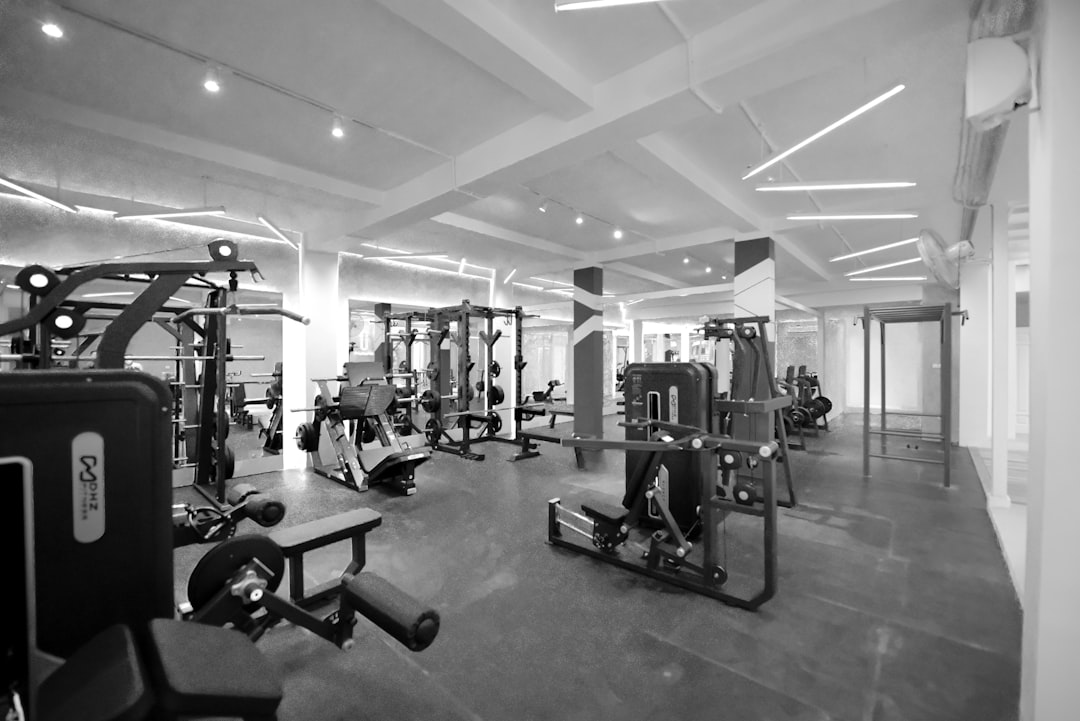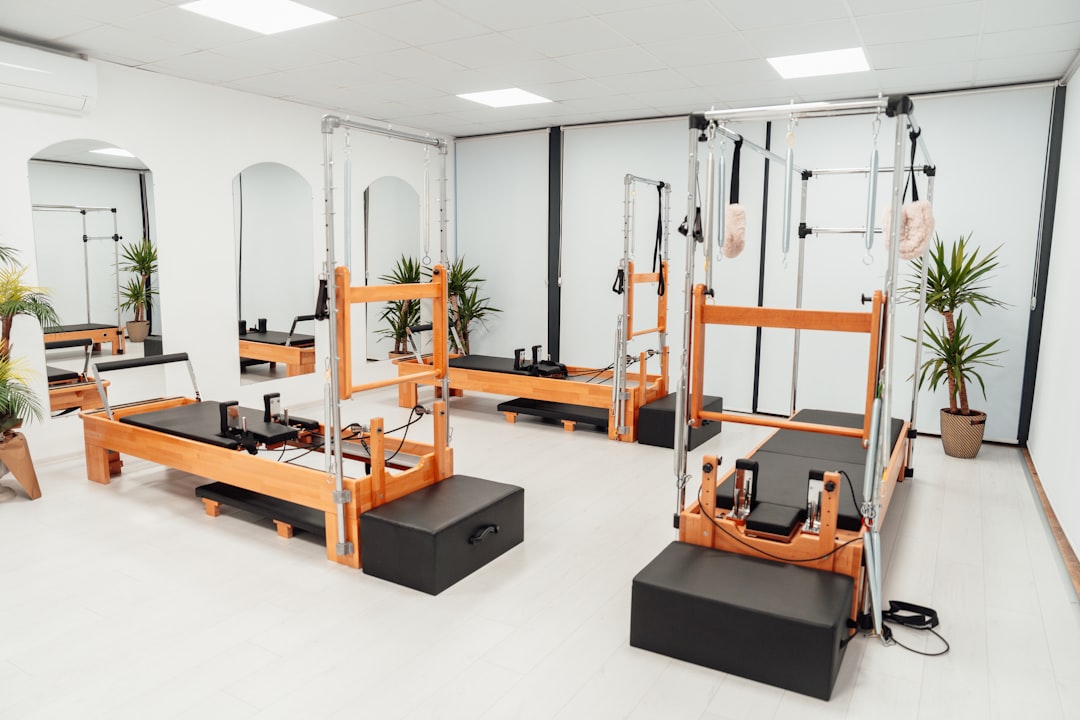

Engage prospects with a scan and streamline customer engagement with FREE QR code marketing tools by Sona – no strings attached!
Create a Free QR CodeFree consultation

No commitment

Engage prospects with a scan and streamline customer engagement with FREE QR code marketing tools by Sona – no strings attached!
Create a Free QR CodeFree consultation

No commitment
Fitness facilities and service providers live in a world of nonstop motion, where uptime, safety, and accountability determine customer satisfaction and revenue. Yet many exercise equipment repair services still rely on analog processes that obscure signals of need and slow response times. Paper logs, voicemail tags, and static stickers and labels with phone numbers often result in missed or delayed repairs, confusing handoffs between staff and vendors, and a lack of visibility into which accounts require immediate attention.
As a result, providers spend valuable time chasing information instead of fixing machines. Communication fragments across locations and teams, warranty and service histories are hard to access at the moment of need, and high-value opportunities are lost because they never make it into a CRM. This is not only inefficient. It also impacts safety and user trust when out-of-order machines linger on the floor.
QR codes solve these gaps by turning every physical touchpoint into a digital entry point. Place a code on a treadmill’s dashboard, a maintenance log, or an invoice, and a single scan can trigger a structured repair request, open a live troubleshooting guide, or connect a user to a technician without the friction of app downloads or manual data entry. When powered by a platform like Sona QR, these scans become measurable engagement signals that feed your CRM, reveal intent by location and machine type, and route jobs to the right person quickly. The outcome is faster time to repair, fewer missed requests, higher first-time fix rates, and a better experience for facility staff and members alike.

Repair leaders want faster response times, clearer accountability, and fewer surprises. QR codes bridge the gap between physical machines and digital workflows so your teams can capture every request, verify context on the spot, and close the loop with data. The shift begins with replacing manual handoffs and scattered contact points with QR-enabled forms, guides, and status dashboards that collect the right information and route requests intelligently.
Begin by identifying the moments where your current process breaks down. If paper maintenance logs go missing or stickers with phone numbers lead to untraceable voicemails, make those your first QR deployments. Pair each placement with a destination that serves a specific goal, such as a repair intake form, warranty activation, or a knowledge base article for error code troubleshooting. Use dynamic QR codes from Sona QR so you can update destinations without reprinting as your processes evolve. Start creating QR codes for free.
When you replace scattered analog moments with QR-enabled steps, engagement becomes traceable, service becomes faster, and data becomes actionable. The payoff is not just operational. It is commercial. You gain the ability to identify high-intent accounts, predict maintenance needs by equipment class, and deliver proactive service that keeps gyms running and customers loyal.

Exercise equipment repair lives at the intersection of safety, uptime, and customer experience. When a treadmill fails during peak hours, staff need an instant, reliable way to log the issue and notify a technician. Traditional methods like calling a number on a sticker or jotting a note in a binder do not create structured data, and they rarely capture the context needed for rapid resolution. QR codes fix that by making the path from problem to action clear and measurable.
They also help teams move faster with fewer errors. A scan can open a prefilled form that includes the machine’s ID, brand, and location, plus a dropdown for common faults. The same scan can trigger an email or SMS to the right service desk, reducing back-and-forth and cutting resolution time. For busy facilities with rotating staff or multiple locations, this level of simplicity reduces training needs and keeps uptime high in gyms, campus rec centers, and hotel fitness rooms.
Consider a simple scenario. A member notices a wobble on an elliptical and scans a code on the console. The form preloads the asset ID and location, asks for photos, and submits to the repair queue. The scan appears in your Sona QR dashboard tagged to that site and equipment model. A technician receives the ticket with photos, ETA is visible to the facility manager, and the issue is resolved before peak hours the next morning. The result is visible, trackable, and repeatable.
Not every QR code should behave the same. The format you choose should match the context of the scan and the outcome you want. In repair environments, the most useful formats are those that speed intake, simplify contact, and remove friction from on-site work.
Dynamic QR codes are best for most repair applications. They allow you to update destinations, collect analytics, and route by context without reprinting. Static QR codes can be useful for fixed assets like a PDF of a user manual or a permanent safety checklist, but they lack flexibility and tracking.
Choose dynamic QR codes when you need flexibility, analytics, and personalization at scale. Sona QR platform provides all major formats with centralized management so you can standardize design, track performance, and adjust destinations as your processes evolve.

Every printed surface, invoice, and equipment panel is an opportunity to convert interest into action. The key is to put QR codes where users already look and then connect each scan to a path that creates business value, such as a service request, warranty activation, or contract renewal.
Start with placements that are directly tied to performance and safety. Dashboards and maintenance logs are high-intent locations where a scan is likely to result in a repair ticket. Expand from there into marketing and relationship touchpoints like direct mail, invoices, and trade show materials. Use unique codes for each channel so you can attribute leads and revenue accurately.
By watching scan volume and conversion from each placement, you will discover where attention is highest and where friction remains. Over time, this creates a virtuous cycle in which data guides smarter placements, better messaging, and higher value per interaction.

The most effective QR deployments map to real moments in the service lifecycle. Focus on use cases that reduce downtime, capture context, and create opportunities for proactive outreach. Each use case should be easy to scan, obvious in purpose, and tied to a measurable outcome.
Start small with high-traffic assets and expand as you prove impact. For example, deploy on all cardio machines first, then add strength equipment, then locker room signage and front desk materials. As engagement grows, use scan data to refine forms, automate routing, and launch targeted education campaigns.
Collectively, these use cases raise first-time fix rates, reduce repeat visits, and improve safety by making it simple to report hazards immediately. They also build a steady stream of intent data you can use for retargeting and account growth.
Every scan is a signal. When a staff member logs a fault, or a manager checks repair status, they reveal interest, urgency, and context. Use this data to create behavior-based audiences for follow-up campaigns that feel helpful and timely, not generic. With Sona QR, you can tag scans by asset type, location, and journey stage, then sync them into your CRM and ad platforms automatically.
Think in terms of lifecycle stages. Awareness scans might come from trade show collateral or a brochure about preventive maintenance. Consideration scans could be tied to pricing sheets or warranty details. Conversion scans include repair bookings or upgrade consultations. Each step can trigger a different nurture path that addresses the user’s role and intent.
This approach transforms anonymous foot traffic into identifiable audiences you can serve with relevance. Instead of blasting generic messages, you will nurture accounts with content aligned to the exact machines they use and the problems they face.
QR codes work best when they connect offline moments to digital journeys that your teams can measure and improve. Treat them as bridges that unify brand, operations, and sales. The same code that launches a repair form can also add new records to your CRM, inform lifecycle campaigns, and help your team prove ROI on print materials and events.
Begin by auditing your current channels and noting where you want measurable actions. If a trifold brochure outlines your service plans, add a QR code that opens a pricing calculator or consultation booking page. If your invoices go to busy admins, include a QR that schedules the next preventive maintenance window in two taps. Each touchpoint should have a purpose and a destination that makes life easier for the scanner.
By centralizing code creation and analytics in Sona QR, you gain a unified view of engagement across every channel. You will know which placements deliver the most scans, which destinations convert best, and how to invest to scale what works.
Launching a high-performing QR program does not require a complex overhaul. It does require a disciplined approach to use case selection, code design, deployment, and optimization. Follow the steps below to move from pilot to scale while preserving quality and control.
Treat this as a repeatable playbook. Each time you add a new placement or campaign, run through the checklist to ensure outcomes are clear, destinations are optimized, and measurement is in place.
Focus on moments where analog processes create risk and waste. Examples include lost repair requests, delayed warranty activations, and missing appointment confirmations. Select use cases that touch the heartbeat of your operation: safety, uptime, and customer satisfaction.
Clarify the business outcome you expect. You might aim to reduce time to ticket creation by 50 percent, increase first-time fix rate by 15 percent, or capture 100 percent of maintenance requests digitally. Document the baseline so you can attribute improvements to the QR initiative.
Prioritize dynamic QR codes for most deployments. They allow edits without reprinting, enable scan analytics, and support route-by-context logic. Reserve static codes for fixed documents like a manufacturer’s PDF manual that will not change often.
Match format to the action you want. Service intake forms are best delivered via web link. Technicians benefit from vCards for fast contacts and Wi-Fi QR for network access. Invoices and mailers often work well with SMS or email triggers that prefill the subject and body to reduce friction.
Design for the environment. Use high-contrast codes, adequate quiet zones, and resilient materials that tolerate sweat, cleaning sprays, and bright lighting. Always include a benefit-driven CTA such as Scan to report an issue or Scan for maintenance schedule so scanners know what to expect.
Test rigorously before you print at scale. Check scannability from common angles, across iOS and Android devices, and under fluorescent and natural lighting. Validate error-correction levels and ensure codes still scan if partially scuffed. Confirm that forms load fast on cellular networks and are mobile friendly.
Place codes where eyes naturally go. On consoles near start buttons, on maintenance logs in staff rooms, on invoices near the balance due line, and on trade show banners at eye level. Map each placement to an intent. This creates clarity for users and better data for your team.
Stagger deployment to verify impact. Start with one location, collect feedback, and iterate. Scale across sites using a standardized labeling convention so you can filter analytics by region, equipment type, and campaign.
Use Sona QR to monitor scans by time, location, device type, and campaign source. Connect to your CRM to attribute leads and bookings to placements. Review conversion analytics to find drop-off points, then A/B test CTAs, landing pages, and form fields.
Turn insights into action. If scans are high but form completion is low, shorten the form or add photo prompts. If a certain equipment line generates many requests, adjust preventive maintenance schedules or training content. Reprint codes with updated messaging where needed, and retire underperforming placements.
A checklist culture ensures each deployment has a clear purpose, sound design, and measurable impact. Over time, your QR program becomes a repeatable engine for operational excellence and growth.

Attribution matters. Without it, you cannot prove that a console sticker or mailer led to a repair booking, a contract renewal, or a cross-sell to an extended warranty. QR-enabled tracking closes this loop by capturing not only who scanned, but also how they engaged afterward.
Use a centralized platform to standardize tracking parameters, connect them to your CRM, and visualize outcomes by channel, site, and asset type. Sona QR and Sona together provide the toolset to move beyond vanity metrics and quantify how offline interactions contribute to pipeline and revenue.
When your teams can see that a single console sticker generated dozens of repair requests, five upgrade consultations, and two extended warranty sales, investment decisions become easy. Analytics transform QR codes from a convenience into a core growth driver.
Once the basics are in place, scale thoughtfully. Extend QR usage into new surfaces, refine messaging, and automate follow-ups so every scan leads to a productive next step. Training staff to champion the program accelerates adoption and keeps data quality high.
Keep experimenting with creative placements tied to real workflows. A QR code on a technician’s leave-behind card can request a satisfaction rating and prompt a referral. A code on a parts delivery box can confirm receipt and open a short installation guide. Each idea should remove friction and create measurable value.
Leading exercise equipment repair services now differentiate themselves by how effectively they surface, track, and act on every customer engagement. QR codes are at the heart of this shift, bridging historical gaps in account visibility and transforming fragmented processes into a unified, data-backed service journey. By integrating Sona QR for code creation and analytics, and Sona.com for attribution and journey mapping, providers gain the agility and insight required to overcome missed opportunities, reduce manual inefficiencies, and proactively serve accounts at every touchpoint. The result is safer floors, faster fixes, and stronger, more profitable relationships.
QR codes have revolutionized the exercise equipment repair services industry by transforming static service manuals and equipment tags into dynamic, interactive tools that streamline repairs and enhance customer satisfaction. Whether it’s accelerating technician access to diagnostics, improving communication with clients, or simplifying service tracking, QR codes replace cumbersome paperwork with instant, mobile-friendly solutions that boost efficiency and transparency.
Imagine technicians instantly accessing up-to-date repair histories and troubleshooting guides with a simple scan, reducing downtime and elevating customer trust. With Sona QR, you can create dynamic, trackable QR codes in seconds, update information without reprinting, and link every scan directly to service records and customer feedback. No guesswork, no delays—just smarter, faster repair workflows.
Start for free with Sona QR today and turn every scan into a seamless repair experience and loyal customer connection.
Use QR codes placed on equipment or related materials to instantly connect to repair intake forms or technician contacts, enabling quick access to local, reputable repair services.
Common issues include mechanical faults like wobbles or error codes on cardio machines and other gym equipment that can be reported via QR code forms capturing photos and fault details.
The article does not specify repair costs but highlights that using QR codes reduces operational costs by improving efficiency and reducing downtime.
Signs include unusual noises, mechanical wobbles, error-code displays, or equipment failure during use, which can be quickly reported using QR codes on the machine.
Prevent future issues by scanning QR codes linked to maintenance tips, warranty activations, firmware updates, and preventive maintenance guides attached to equipment manuals or stickers.
QR codes digitize repair requests, capture detailed context instantly, route tickets intelligently, and provide measurable data that reduces response time and increases first-time fix rates.
Dynamic QR codes are preferred because they allow destination updates, analytics, and routing; static codes are suitable for fixed documents like manuals.
Place QR codes on machine consoles, maintenance logs, invoices, trade show materials, and facility signage where users naturally look to report issues or access information.
Facilities can use platforms like Sona QR to track scan data by location, device, and campaign, integrate with CRMs, and attribute repair requests to specific placements for analytics.
Design codes with high contrast, error-correction, protective laminates, and clear calls to action that withstand sweat, cleaning agents, and bright lighting for easy scanning.
They enable immediate, structured reporting of faults, rapid technician notification, and transparent repair status tracking, reducing equipment downtime and enhancing user safety.
Yes, QR codes can link to warranty activations, maintenance scheduling, upgrade consultations, and marketing campaigns to build ongoing customer relationships.
Use Sona QR's trackable codes to improve customer acquisition and engagement today.
Create Your FREE Trackable QR Code in SecondsJoin results-focused teams combining Sona Platform automation with advanced Google Ads strategies to scale lead generation

Connect your existing CRM

Free Account Enrichment

No setup fees
No commitment required

Free consultation

Get a custom Google Ads roadmap for your business






Launch campaigns that generate qualified leads in 30 days or less.
